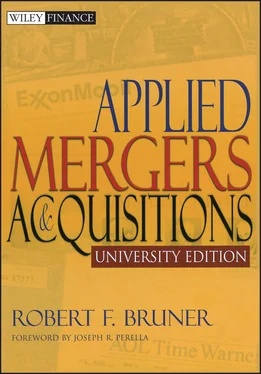Exhibit 5.2shows the percentage change in cross-border acquisitions among the United States, Canada, and Mexico from 1991 to 1993, before NAFTA was formed, to 1994–1997, the three years following NAFTA. Within the United States, the number of U.S./U.S. acquisitions grew 60 percent, reflecting the onset of the largest acquisition wave in U.S. history; this domestic growth rate is a rough benchmark for comparing cross-border M&A growth rates within NAFTA. The exhibit shows that acquisitions by U.S. firms into Canada and by Canadian firms into the United States outpaced the domestic U.S. acquisition growth rate. The results with respect to Mexico are significantly lower than the U.S. domestic deal growth, reflecting perhaps the massive devaluation of the peso in 1995 and offering a caution to executives.
EXHIBIT 5.2 Percentage Rate of Growth in Transactions Domestically and Cross-Border among the United States, Mexico, and Canada, Comparing Deal Volumes from 1991–1993 to 1994–1996
| Country of Acquirer |
Country of Target |
| United States |
Canada |
Mexico |
| United States |
60% |
65% |
38% |
| Canada |
70% |
|
|
| Mexico |
44% |
70% |
|
Note: The growth rate is calculated by dividing the number of all transactions 1991–1993 into the number of all transactions 1994–1996, and subtracting 1.0.
Source: Thomson Financial Securities Data Corporation, Mergers and Acquisitions Database.
Increasing capital market integration elevates the importance of the equity investor mind-set probably at the expense of other stakeholders. As the equity orientation grows, M&A practice changes. Overpayment is penalized; price becomes an object of greater attention. The volume of unsolicited acquisition attempts may rise. The product market scenario outlined earlier may place special importance on the advantage of the “first mover.” To enter new markets rapidly, decisively, and first may dictate tactics that are at their core impatient. The unsolicited acquisition attempt is risky, but may be justified in managers’ minds by the circumstances. Before the euro, the hostile tender offer was a rarity in Europe. But the weeks following the birth of the euro witnessed major hostile offers on the continent. 7 Deal structures following increased capital market integration may also reflect greater use of innovative terms including derivative securities, bridge loans, and “junk” debt. Growing sophistication in the capital markets will make this possible.
Acquisitions are inherently acts of optimism. Deteriorating economic conditions would likely impair that optimism, and the resulting volume of deals. Again, the experience of Mexico/U.S. cross-border deals is illustrative here. Exhibit 5.3shows that Mexican acquirers virtually disappeared from the cross-border M&A market in the wake of the peso devaluation in late 1994. The financial crisis in East Asia in 1997 triggered a wave of M&A activity in that region. Precrisis in 1996, the regional volume of deals was $3 billion per year. In 1999, the volume had risen to $22 billion; this stemmed significantly from M&A activity in Korea and Thailand, two countries deeply affected by the “Asian flu” crisis. Especially strong activity was seen in real estate, financial services, retailing, and wholesaling. Mody and Negishi (2001) argued that driving the increased M&A was a general rise in inbound foreign direct investment associated with economic restructuring of the region after the crisis. Further, they argue that the M&A activity was driven by the creation of new opportunities due to government policy changes in the region than by the lure of bargain-basement asset prices.
EXHIBIT 5.3 Cross-Border Transactions between Mexico and the United States, 1994 and 1995
|
1994 |
1995 |
% Change |
| Acquisitions by U.S. firms into Mexico |
|
|
|
| Number of transactions |
48 |
47 |
–2.1% |
| Value (US$ millions) |
$496 |
$499 |
0.7% |
| Acquisitions by Mexican firms in the U.S. |
|
|
|
| Number of transactions |
14 |
1 |
–92.9% |
| Value (US$ millions) |
$2,094 |
$0.1 |
–100.0% |
Source of data: Thomson Financial Securities Data Corporation, Mergers and Acquisitions Database.
DRIVERS OF CROSS-BORDER M&A
A large body of research illuminates the forces behind cross-border M&A activity: exploiting market imperfections, intangible assets, risk reduction through diversification, exchange rates, financial market conditions, and tax rates.
Exploit Market Imperfections
A venerable stream of research in economics suggests that foreign direct investment through cross-border acquisition seeks to take advantage of market imperfections and failures 8 in foreign countries. The theory is that the buyer will recognize profitable opportunities to take advantage of cheap labor and raw materials, unmet consumer demand, deregulation, trade liberalization, and country integration of capital and product markets into global markets. Exhibit 5.4presents a list of 17 large cross-border deals from 1997 to 2002. The forces of change are evident in the makeup of this list:
Telecommunications. Seven of the 17 deals originate in the telecommunications industry and suggest these forces at work: rapid technological change and government deregulation. Vodafone/Mannesmann and Vodafone/AirTouch, both in the wireless segment of the industry, are notable for their size. Also, Vodafone initiated one of the few hostile offers ever to occur in Germany—and won.
Pharmaceuticals/chemicals. Rising R&D expense and the desire to achieve distribution economies motivated the Astra/Zeneca and Hoechst/Rhône-Poulenc deals.
Consumer foods. Two deals (acquisitions of BestFoods and BAT Industries) were driven by the desire for portfolio diversification across product categories, perceived benefits of global branding, perceived undervaluation of brands in the home capital markets, and an expectation of greater economies of scale in distribution.
Automobiles. Rising new product development costs and the consequent consolidation in the industry motivated the combinations of Daimler/Chrysler, Ford/Volvo, and others.
In short, the surging volume in cross-border M&A is driven by the many of the same fundamental economic forces outlined in Chapter 4. From this perspective, cross-border M&A activity is not a curious sideshow to the large domestic U.S. volume, but is sizable and linked integrally with it.
Extend the Reach of the Buyer’s or Target’s Intangible Assets
Researchers 9 observe the heavier investment in manufacturing and speculate that cross-border M&A represents an effort of firms with significant intangible assets (such as brand names, patents, and managerial know-how) to broaden the scale of their use and preempt others who might be tempted to imitate or appropriate those intangible assets. Similarly, a foreign buyer may seek to acquire intangible assets of a foreign target with the intent of bringing the benefits of those assets back home. Eun et al. (1996) found that foreign acquirers benefit from targets’ R&D. Morck and Yeung (1991) found that “the positive impact of spending for research and development and for advertising on market value increases with a firm’s multinational scale, but that multinationality per se does not have any significant impact…. Intangible assets are necessary for direct foreign investment to make sense.” ( Page 185)
Читать дальше












